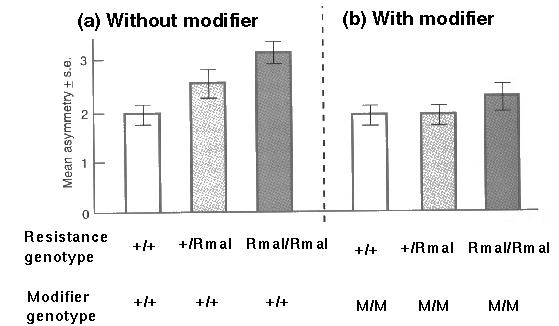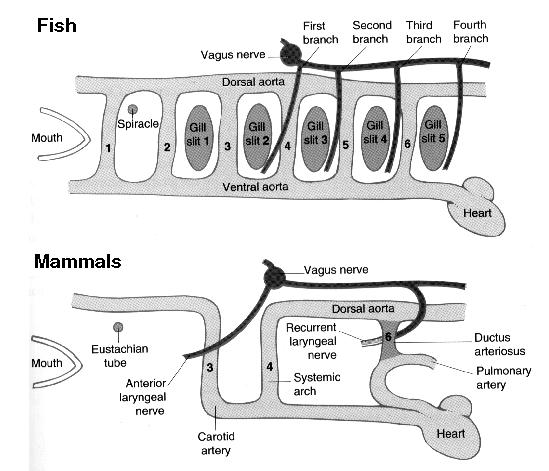
The Nature of Adaptation
and Selective Constraints
Adaptation — A trait, or integrated set of traits, that increases the fitness of an organism.
Generally speaking, adaptations are traits or characters that appear to be too well-fitted to their purpose to have arisen by chance. That is, they must be the result of selection.
Adaptations may involve morphological, physiological or behavioural traits. They arise through the accumulation of a series of small improvements over time.
"If it could be demonstrated that any complex organ existed which could not possibly have been formed by numerous successive slight modifications, my theory would absolutely break down." — Darwin.
Examples of Complex Adaptations: the eye; bird wings; the human brain; homeothermic temperature regulation; human language.
Temperature Regulation in a Bee Hive
The reproductive success of every bee (genus: Apis) in a hive hinges upon the survival of the brood, which are very sensitive to temperature during development. Larvae develop properly between the narrow temperature range of 32-36 .C. Despite this, bee colonies often survive in extremely adverse environments.
Mechanisms for Temperature Regulation
(behavioural adaptations)
Adaptations are not always obvious, or easy to identify. In particular, phenotypic plasticity can sometimes create the illusion of adaptive evolution.
Phenotypic Plasticity — variability in the phenotype associated with a particular genotype, due to environmental heterogeneity
Ex. Phenotypic plasticity was a possible explanation for the morphological changes documented by Lossos et.al. It wasn’t conclusively proven that the morphological changes were due to genetic changes.
However, note that phenotypic plasticity can itself be adaptive. The ability to modify your phenotype to suit environmental conditions can be very advantageous.
In order to identify a trait as an adaptation, we must first determine (or suggest) its use or function, and then show that the trait is advantageous. This is often difficult to do, and may involve postulating alternative forms where none may exist.
Example: The White Coat of Polar Bears
Although at first it might have seemed obvious that a white coat is an adaptation for camouflage, it seems polar bears would often be just as successful at hunting if their coat were not white. They do occasionally, however, make use of their camouflage.
The white coat could have arisen for any number of reasons. It may be an adaptation to conserve heat, but to prove this one would have to compare different types of fur to see if the clear hairs actually confer an advantage. Perhaps camouflage was once more important than it is today. Perhaps it is the result of a chance event, where a mutation has become fixed through genetic drift. Perhaps it evolved as a character to allow species recognition…
We can suggest adaptive reasons for virtually any trait. The challenge is to show that the trait actually confers the advantage that we’ve suggested.
Example: Cepaea nemoralis (a land snail)
Populations of C. nemoralis vary in the extent of banding on their shells. Why?
Adaptations Are Not Perfect
Species are constantly evolving and refining their adaptations, as natural selection favours individuals best suited to their environment in each generation. A number of selective constraints prevent adaptations from every being perfect.
Ex. Vertebrate mouths are used for both feeding and breathing. Vertebrates can’t breathe and swallow at the same time, or they choke.
Time Constraints
Evolution takes time (sometimes a lot of it!). Adaptations can be considered "works in progress". Often there simply hasn’t been enough time for evolution to fine-tune adaptations.
Example: Neotropical Anachronisms
Many flowering plants produce fruit to entice animals to disperse their seeds. Fruits need to be attractive to the animals, protect the seeds, and remain in the gut long enough to allow for dispersal of the seeds.
Some trees in the tropical forests of Costa Rica produce very large fruits in great numbers, which are largely inedible to local fauna.

Janzen and Martin suggest these fruits were adaptations to now extinct large herbivores that lived in the area up until about 10,000 years ago. Large fruits would have been attractive to large herbivores, and their hard exteriors would have helped to protect the seeds from being crushed by the herbivores’ teeth.
10,000 years hasn’t allowed enough time for the trees to evolve fruits better suited to the smaller mammals remaining today.
Genetic Constraints
We have seen that when a locus is under selection involving heterozygote advantage, the population evolves to an equilibrium where all three genotypes (AA, Aa, aa) are present. This represents a genetic constraint on adaptive evolution, since homozygotes will always be imperfectly adapted, yet remain in the population.
Example: Sickle Cell Anemia
Homozygotes can have very poor fitness, but remain at appreciable frequencies in populations where malaria acts as a selective agent.
If a new mutation were to arise which allowed malaria-resistance without sickling of the cells, it would likely spread through the population.
Developmental Constraints
Developmental Constraint — "a bias on the production of variant phenotypes (i.e. a limitation on phenotypic variability) caused by the structure, character, composition or dynamics of the developmental system." — Maynard Smith et. al.
The developmental system influences the types of mutations that can occur. Pleiotropy (genes having multiple effects) may require that adaptation of one trait occurs along with changes in another trait.
NOTE: The overall effect a mutation has on fitness is what selection operates on.
Example: Australian Sheep Blowfly (Lucilia cuprina)
Farmers sprayed insecticide, and blowflies soon evolved resistance to it. The mutation conferring insecticide resistance also disrupted the developmental system, producing asymmetry which is maladaptive. Strong selection for insecticide resistance lead to increasing developmental asymmetry.

Over time, mutations at other genes ("modifier loci") evolved to restore symmetry, while maintaining insecticide resistance. The developmental system adjusted to the necessity of carrying the mutation conferring insecticide resistance.
Note that in cases where selection for one trait is not this strong, adaptation of one trait may be difficult if it requires a maladaptation of another trait. (More on trade-offs in a moment)
Historical Constraints
"You can only work with what you’ve got."
In the case of heterozygote disadvantage, populations will fix for one allele (A or a). Which allele fixes depends on :
The initial allele frequencies represent a historical constraint. Even if fixation for A would lead to higher fitness, a may rise to fixation if the initial allele frequency of A is below the unstable equilibrium point.
Example: The Recurrent Laryngeal Nerve

Trade-Offs
Traits often serve multiple functions, and genes often have multiple effects. Often the value of one trait in not independent of the value of another trait. For instance, dividing ones time between foraging for food and defending the nest. These traits or genes must evolve in response to selection on all of these functions, achieving the best possible overall fitness.
Example: Threespine Sticklebacks (Gasterosteus aculeatus)
Male sticklebacks establish territories in the spring, defend them from intrusions by other males, and court females. Male sticklebacks develop either black or red bellies during the mating season.
Breeding experiments show that the colour of male bellies is controlled by a single locus with two alleles (black and red). Why then does the black allele remain in the population?
Male sticklebacks with black bellies are more successful in acquiring territories from mudminnows. Female sticklebacks will only mate with males that have nest territories.
A trade-off exists between success at intraspecific competition and interspecific competition.
Summary